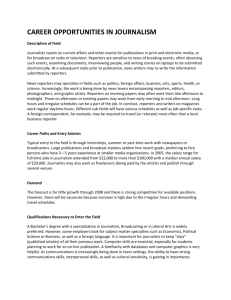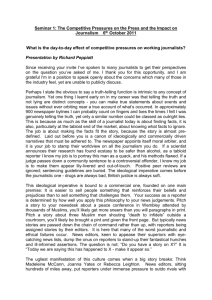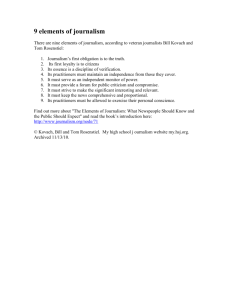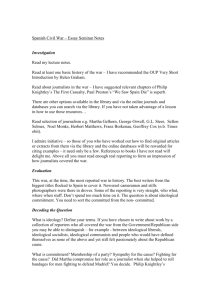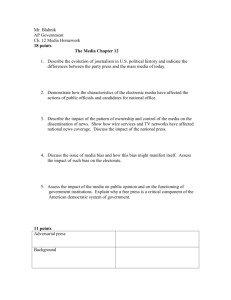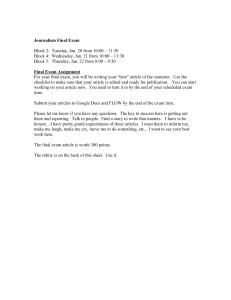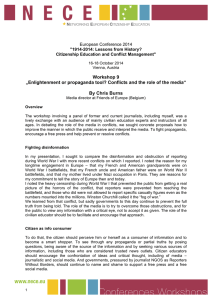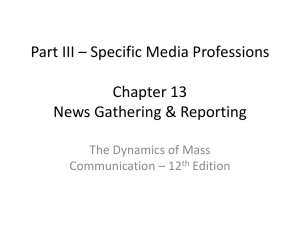Michelle's 3 Key Rules for New Journalists
advertisement
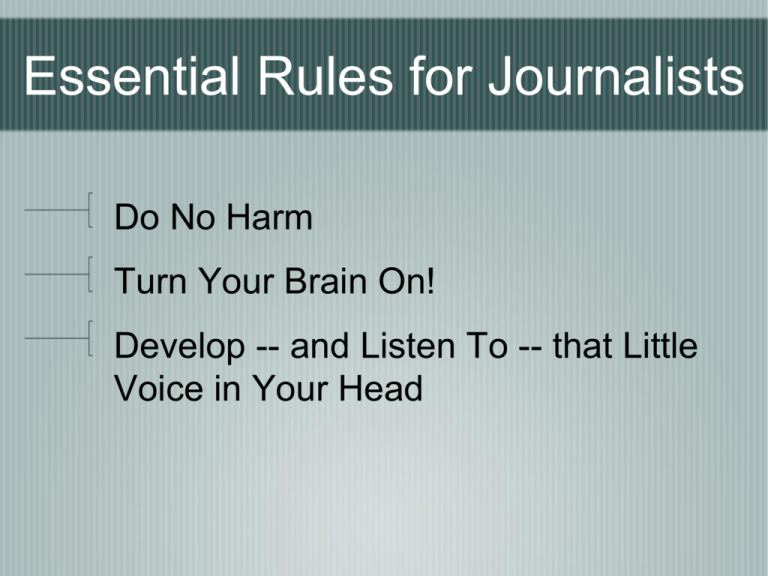
Essential Rules for Journalists Do No Harm Turn Your Brain On! Develop -- and Listen To -- that Little Voice in Your Head Also: Get it Right When you Mess up, ‘Fess up Good reporters must be … Engaged in the world around them Articulate Engaged reporters are … Curious Empathetic Articulate reporters … Use words effectively and correctly. He only punched his brother. He punched only his brother. Organize elements of a story in a logical and dramatic manner. Chapter One Journalism Today Media convergence Taking advantage of the Internet TV, Newspapers partnering to gather news Sharing resources: pros and cons Convergence is ... Media outlets sharing facilities, resources, personnel and content. Digital journalism 330 million Internet users worldwide 60 million newspaper Web users Newspaper Web audiences are growing at nearly twice the rate of all online audiences. Old and new Emerging technologies create new ways of producing news. (Multi-media) Technology is driving news outlets back to their roots -- covering local news. Citizen journalism What is citizen journalism and what’s good about it? Citizens contributing content – photos, text On News sites or own sites Citizen journalism Supplements the work of traditional reporters and photographers. Helps the audience feel more connected to the news outlet and the community. Pushes media outlets to cover local news better. Training journalists today Traditional writing/reporting and/or digital skills Chip Scanlan from Poynter: “The most essential tools for journalists aren’t dependent on a computer chip, but a reporter’s mind and heart…the tools of curiosity, integrity and empathy, plus the storyteller’s tools – scene, metaphor, and imagery.” This class should ... Help you learn and employ Journalistic critical thinking Sound news judgment Strong newsgathering and writing skills. Rules for this class The Basics: Format, Copy Editing & AP Style News story format You will submit an electronic version of all your writing assignments, either as an email attachment or as a blog. When emailing an electronic attachment... Double-space and leave a 1-inch margin on either side and on the top and bottom of every page. Put your NAME, the DATE the story is DUE and a SLUG in the Upper-LEFT-hand corner of the first page. What’s a slug? A one- or two-word name for your story. Unique and specific. Helps editors track the story through the publishing process. Most news outlets use additional “naming conventions” so that a common slug can be re-used from day to day: IraqMain0808r When printing ... Begin your story about a third of the way down the page. Indent each paragraph a half-inch. Use left justification and do not hyphenate words at the end of a line. If a story is more than one page long, type or write “more” at the bottom of the page, center it and put dashes around it. Electronic versions... At the top of each successive page, type your last name, the slug and the page number in the upper-RIGHT-hand corner of the page. At the end of the story, use one of these symbols: -30- OR ### News jargon graf = paragraph lede = lead copy = a story or the text in it cutline = caption AP Style, Accuracy Summary of AP Style in Appendix B – abbreviations, spellings, capitalization etc Always check people’s name spellings during interview, Use Appendix A in book for class exercises

